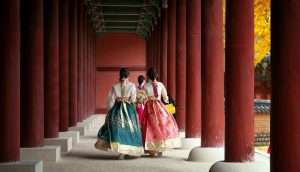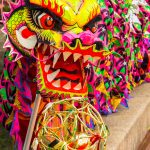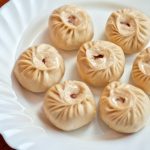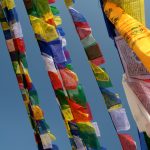This blog post is brought to you by the Library's Biblio Lotus Team. Before you dive in, we've got a great program celebrating the Year of the Rabbit at two library locations:
Celebrate the Year of the Rabbit with the Jasmine Asian Music Ensemble
Let’s welcome the Lunar Year of the Rabbit with Silk Bamboo Music presented by the Jasmine Asian Music Ensemble (JAM). Playing Chinese traditional instruments, the ensemble will wear Chinese traditional dress. Join us to learn the song "Little Rabbit" in Mandarin.
- Thursday, February 2 from 4 to 5 pm at W. Anne Gibson-Esmond Station Library. Registration required.
- Saturday, February 4 from 1 to 2 pm at Oro Valley Public Library. Registration required.
Also, don't miss this Grab N Go Kit (Make a Lunar New Year rabbit bookmark)!
Lunar New Year follows the lunar calendar, which means it follows the cycles of the moon. In 2023, Lunar New Year will begin on Jan 22. It is the Year of the Rabbit in the Chinese Zodiac. Different cultures celebrate Lunar New Year differently with various foods and traditions that symbolize prosperity , abundance, and togetherness.
Xīn Nián 新年 China
Xīn Nián is 15 days long. Gathering together and eating delicious foods are a big part of the holiday. Two of the most important meals happen on New Year’s Eve and the last day of Xīn Nián. The first is called Reunion Dinner, and always includes 饺子 dumpling and fish.
The last day of Xīn Nián is the lantern festival. This is when the moon is full. Families eat 汤圆 tangyuan (sweet rice ball soup). The rice balls are stuffed with black sesame paste, fruit, red bean paste, or chopped peanuts. People also light lanterns that are often made of red paper. Children get lots of money, wrapped in red envelopes, from relatives on Xīn Nián.
Seollal 설날 Korea
Seollal is an important 3-day celebration to spend with one’s family and also pay respect to one’s ancestors and elders. In Korean culture, people still celebrate the day of their birth, but on Lunar New Year, their Korean age increases by a year.
It is traditional to eat a bowl of 떡국 ddeokgeuk (rice cake soup) on this day. After you eat the soup, you are a year older! People wear traditional clothes called 한복 hanbok made of many beautiful colors!
There are also traditional games people play during the holiday. 윷노리 Yut Nori, a board game played with wooden sticks, is a fun way to celebrate, and 연날리기 yeonnalligi (kite-flying) is done for good luck.
Tết Vietnam
Instead of the Year of the Rabbit, it is the Year of the Cat in the Vietnamese tradition. In addition to celebrating the beginning of new year, Tết celebrates the coming of spring. Families get together and prepare a feast to welcome relatives and friends and also honor their ancestors. Celebrations include music and dragon dancing.
The family eats savory Chung Cakes made with sticky rice, mung beans, and pork. Children receive red envelopes with money from older relatives.
Tsagaan Sar Mongolia
Tsagaan Sar means “White Moon”, so it is the White Moon Festival and is a family celebration that lasts three days.
Families gather together and make Бууз or Buuz (big dumplings) and Bansh (small dumplings) to eat. They also eat sheep, and make layers of cookies on large plates, and drink milk tea. They wear their most beautiful дээл or deel (traditional Mongolian clothing). There is also a special greeting during Tsagaan Sar when you meet people: “Амар байна уу? “. It means, “Are you living peacefully?”. Young people greet their elders this way while crossing their hands under their elders’ hands. This is to show respect.
Losar Tibet
Losar means New Year in Tibetan and follows the Tibetan calendar. It will fall on February 21, 2023. Prior to the New Year, people say goodbye to the old year. They clean and purify their houses to prepare for the new year, eat soup called Guthuk, and families will go to local monasteries to worship and get blessings from the monks.
On Tibetan New Year’s Day, people put on their best traditional clothing and honor their ancestors and visit their neighbors. That evening, the families have a reunion dinner. The second day of the New Year, they visit with relatives and friends and children visit their elders. They wish each other good luck and happiness. The third day of the new year, they hang prayer flags from the tops of houses.







